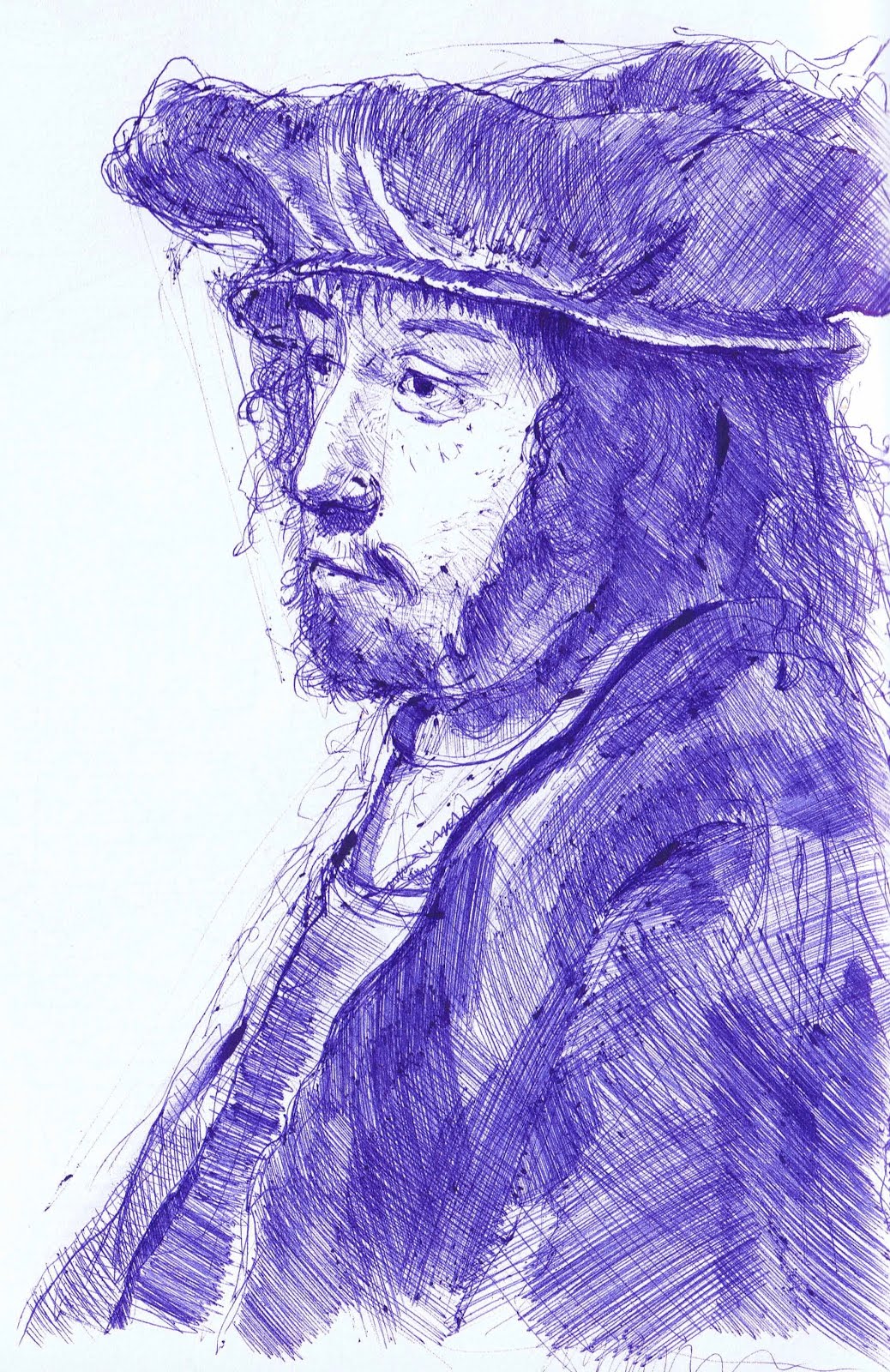Its been almost a year since I last posted on this blog. I have made some big changes to my career and have weaned myself off of pursuing a career as a portrait painter and decided to use my skills towards illustration in the entertainment industry. I am now enrolled in the Art Center College of Design in Pasadena, California. I started my first term of school this past September and I am currently 7 weeks in my first 14 week term. I am considered a transfer student and I am in my second term at Art Center. Also, I have decided to cancel my solo show at the Pacific Grove Art Center and decided to focus entirely on Art Center College of Design. The workload at the school is incredibly high and so is the quality. I know that I couldn't do both things at the same time so I will have to revisit my fisherman work in the future.
I wanted to share a short essay I wrote on completing the Block-In method of drawing. I wrote this paper for my English class and thought it was well written enough that I can share it with others.
Pictured above. A Figure drawing example using the block in technique.
Learn to Draw using the Block-In
There are multiple ways to draw a figure, some are observation based, while others use a conceptual thinking process. I want to focus on the observational way of drawing the human figure. This process requires multiple steps and can be broke down into a simple way so that anyone can draw in this method. This method of working is called “The Block In.” As we progress through the stages of drawing you will begin to understand why it’s called “The Block In.”
The first stage is to look at the figure carefully and establish where your gesture and placement will be on the drawing. Do not many any marks on the paper just yet. Just look at the figure carefully and make mental notes on what you are seeing at this moment, the process of mental drawing will help you think before you act. Next you may establish the gesture of the figure and look for the points and counterpoints on the major joints, such as the elbows and knees. Once the gesture is established, you can move towards defining the figure drawing.
Start by using a straight line and measure on part of the head, such as the nose to the chin, or the forehead to the chin. This first line is very important in that it will give you a basis on which every other line will be measured against. Now that you are confident you have the first line accurate, move on from shape to shape correcting each aspect of the drawing using that first line as a standard of measurement. At this stage of the drawing your figure should be fully outlined and we can move onto the shadow shapes stage.
Using the same method that we did to reach the outline of the figure, we will find a visual anchor in the drawing and ensure that our shadow shapes are accurate. Begin by building in your shadow shapes slowly and when putting in the outlines keep your hand light. In this way of drawing you can carefully build the overlapping atmosphere of the shadow and can set yourself up for the next drawing stage. At the end of this stage make sure to take a step back and confirm the drawings proportions are accurate.
Once the outline of the shapes is complete, begin to mass In the shadows using the side of a piece of charcoal. Keep the shadow masses all in one tone and, at this stage you can also darken your core shadows to get the form to turn. Once that is complete, you can even add some highlights to the figure so that the drawing can be visually balanced. Begin to wrap up the drawing by checking your edgework in the lights and darks to confirm the accuracy of the drawing. If everything on the drawing feels accurate the drawing is visually balanced, then you are at a good place to stop.
I hope this has been helpful for you to understand this particular method of drawing. I stated previously that there are multiple methods of drawing the figure and I find this method most beneficial to me. It’s not the “right” way to draw as there are many other methods I didn’t cover. However, if you want to accurately draw what you see without conceptualizing the figure, then this method is for you. Thank you for reading and as always, practice makes perfect. So, draw everyday!

